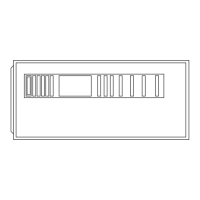30
Table B—Minimum Allowable Input Rating of
Space--Heating Applia nce in
Thousands of Btuh per Hour
VENT HEIGHT
FT. (M)
INTERNAL AREA OF CHIMNEY
SQ. IN. (SQ. MM)
12
(7741)
19
(12258)
28
18064)
38
(24516)
Local 99% Winter Design Temperature: 17 to 26 degrees F
6 0 55 99 141
8 52 74 111 154
10 NR 90 125 169
15 NR NR 167 212
20 NR NR 212 258
30 NR NR NR 362
Local 99% Winter Design Temperature: 5 to 16 degrees F*
6 NR 78 121 166
8 NR 94 135 182
10 NR 111 149 198
15 NR NR 193 247
20 NR NR NR 293
30 NR NR NR 377
Local 99% Winter Design Tem perature: --- 10 to 4 degrees F*
6 NR NR 145 196
8 NR NR 159 213
10 NR NR 175 231
15 NR NR NR 283
20 NR NR NR 333
30 NR NR NR NR
Local 99% Winter Design Temperature: --- 11 degrees F or
lower
Not recommended for any vent configuration.
*Th e 99.6% heating (db) temperatures fou nd in th e 1997 or 2001
ASHRAE Fundamentals Handbook, Climatic Design Information chapter,
Table 1A ( United States) and 2A (Cana da) or the 2005 ASHRAE Funda-
mentals handbook, Climatic Design Information chapter, and the CD ---
ROM included with the 2005 ASHRAE Fundamentals Handbook.
Air for combustion must not be contaminated by halogen
compounds which include chlorides, fluorides, bromides, and
iodides. These compounds are found in many common home
products such as detergent, paint, glue, aerosol spray, bleach,
cleaning solvent, salt, and air freshener, and can cause corrosion
of furnaces and vents. Avoid using such products in the
combustion-- air supply. Furnace use during construction of the
building could cause the furnace to be exposed to halogen
compounds, causing premature failure of the furnace or venting
system due to corrosion.
Vent dampers on any appliance connected to the common vent
can cause condensation and corrosion in the venting system. Do
not use vent dampers on appliances common vented with this
furnace.
Additional Venting Requir
ements
A 4--in. (102 mm) round vent elbow is supplied with the furnace.
A 5 --in. (127 mm) or 6-- in. (152 mm) vent connector may be
required for some model furnaces. A field--supplied 4-- in. (102
mm) to 5-- in. (127 mm) or 4--in. (102 mm) to 6--in. (152 mm)
sheet metal increaser fitting is required when 5--in. (127 mm) or
6--in. (152 mm) vent connector is used. See Fig. 37 -- 49, Venting
Orientation for approved vent configurations.
NOTE: Vent connector length for connector sizing starts at
furnace vent elbow. The 4--in. (102 mm) vent elbow is shipped
for upflow configuration and may be rotated for other positions.
Remove the three screws that secure vent elbow to furnace, rotate
furnace vent elbow to position desired, reinstall screws. The
factory -- supplied vent elbow does NOT count as part of the
number of vent connector elbows.
The vent connector can exit the door through one of five
locations on the door.
CUT HAZARD
Failure to follow this caution may result in personal injury.
Sheet metal parts may have sharp edges or burrs. Use care
and wear appropriate protective clothing, safety glasses and
gloves when handling parts, and servicing furnaces.
CAUTION
!
1. Attach the single wall vent connector to the furnace vent
elbow, and fasten the vent connector to the vent elbow
with at least two field--supplied, corrosion--resistant, sheet
metal screws located 180_ apart.
NOTE: An accessory flue extension KGAFE0 112UPH is
available to extend from the furnace elbow to outside the furnace
casing. If flue extension is used, fasten the flue extension to the
vent elbow with at least two field--supplied, corrosion-- resistant,
sheet metal screws located 180_ apart. Fasten the vent connector
to the flue extension with at least two field--supplied, corrosion
resistant sheet metal screws located 180_ apart.
2. Vent the furnace with the appropriate connector as shown
in Fig 37 --49.
3. Orient the door to determine the correct location of the
door knockout to be removed.
4. Use aviation-- type tin snips to remove the correct
U--shaped knockout in door.
NOTE: A number of techniques can be used to remove these
knockouts as seen in Fig. 50 through 54. The knockout in the
bottom of the door is unique due to its flanging and is not easily
removed by first cutting the two tie points at the edge of the door,
using aviation--type tin snips. (See Fig. 50.) A sharp blow to the
rounded end of the knockout (See Fig. 51.) will separate more tie
points and allow the knockout to be pulled loose. (See Fig. 52.)
Remove any burrs and sharp edges.
For the rectangular J--box knockout, use tin snips along the door
edge and use a sharp blow with a hammer to remove the
knockout.
Remove any burrs and sharp edges.
For the knockouts in the other locations on the door (top and
sides), tin snips can also be used along the door edges; however,
the preferred method is to use a hammer and screwdriver to strike
a sharp blow (See Fig. 53.) directly to the knockout tie points or
use a hammer in the upper left corner of the desired knockout.
(See Fig. 54.) Remove any burrs and sharp edges.
NOTE: If a knockout does not come out after two sharp blows,
pull and snip as needed to remove the knockout. Additional
blows may cause damage to the door.
An accessory Vent Guard Kit, KGAVG0101DFG is REQUIRED
for downflow applications for use where the vent exits through
the lower portion of the furnace casing door. Refer to the Vent
Guard Kit Instructions for complete details.
58CV

